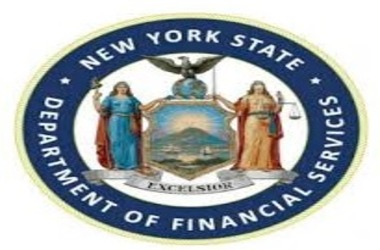
The document can be accessed here. First among state regulators to provide such recommendations is the New York Department of Financial Services. It’s probable that states (and the sector itself) will be given a free hand in defining certain benchmarks that guarantee consumer safety and stability without damaging development, given that Congressional action on stablecoins is doubtful this year (and similarly questionable if federal agencies or financial authorities will pitch to supply certain guardrails). It is possible that other authorities around the nation may follow the New York Department of Financial Services’ (NYDFS) most recent recommendations because of its expertise and importance in the field of virtual currencies.
Stablecoins are a kind of digital asset that are supposed to keep a constant value. This is accomplished by pegging the value of the digital asset to a national currency or some other benchmark asset (i.e., a commodity such as gold or silver). Stablecoins aim to turn into a less turbulent payment method to bitcoin as well as other cryptos by using benchmark assets to stabilize value. They have also been utilized to ease the selling and lending of other cryptoassets in several decentralized finance (DeFi) activities. On the contrary, algorithmic stablecoins generally use an algorithm or smart contract to handle the supply of tokens and direct their valuation to a benchmark asset (for example, the greenback); such stablecoins traditionally do not try to establish valuation by retaining fiat reserves that reach a value that is in a 1:1 correlation with the worth of the stablecoin. Instead, such stablecoins normally guide their worth to a benchmark asset (for example, the U.S. dollar). Nevertheless, regulators, including the federal Financial Stability Oversight Council, have earlier warned that certain cryptos present a likely systematic threat due to stablecoins’ scarcity of reliable risk-management norms and their functional complexity. Stablecoin advocates note that a well-structured stablecoin can permit faster and highly efficient payment plans for a multitude of customers.
The New York Department of Financial Services (NYDFS) is not new to the business of overseeing virtual currencies. In 2015, it became the foremost state to announce its full “BitLicense” laws, making it the first jurisdiction to adopt a full mechanism for governing firms linked to digital currencies. Since 2018, the New York Department of Financial Services has also set rules and regulations on the stablecoins that are issued by the organizations that it regulates. When assessing a company’s request for a BitLicense, the agency conducts a thoughtful study of the company’s product portfolio, including any stablecoin-linked products, as stated in the instruction. Looking ahead, BitLicensees and New York State limited purpose trust institutions that interact in digital currencies business transaction are required to secure DFS’s written permission before presenting a substantively new product, facility, or activity (for example, issuance of stablecoins).
In particular, the New York Department of Financial Services (NYDFS) has provided this guideline in order to “highlight certain standards that will usually apply to stablecoins pegged to the United States dollar that are released under DFS control.” The primary concerns that are addressed in the guideline are backing and redeemability, obligations for asset holdings, and confirmation regarding the backing of these kind of reserves:
Backing and Redeemability: In accordance with the instructions, a stablecoin needs to be “fully backed” by a stockpile of assets (as compared to algorithmic stablecoins, which are not actually backed by fiat reserves), in a similar manner that the “valuation of the Reserve is at least equal to the minimum value of all outstanding units of the stablecoin as of the close of each business day.” It continues to state that the issuing bank of the stablecoin must embrace “clear, noticeable redemption guidelines, endorsed in beforehand by DFS in writing.” These policies must give owners the option to redeem their stablecoin tokens directly from the issuing company (as compared to through an intermediary) “in a timely manner at par for the United States dollar,” less any fees that may be applicable. The guideline offers a blueprint for the wording to be used in customer guidelines, such as a definition of redemption and an explanation of what the phrase “timely” implies in both typical and exceptional situations.
Reserves: The recommendation stipulates that reserve assets must be stored in a chartered entity, apart from the issuer’s exclusive tokens, and in a separate location from where the issuer stores their own tokens. In addition to this, it stipulates that the reserve must be made up of only specific varieties of assets, such as cash that is kept in bank accounts in the United States, United States Treasury notes with a maturity date of less than three months, and other designated Treasuries. Noteworthy is the fact that the guideline does not include commercial paper on the list of acceptable reserve assets.
Attestation: The instruction mandates, among many other thoughts, that the reserve be liable to an evaluation of management’s declarations at least once per month by a third-party Certified Public Accountant (“CPA”) on the basis of the attestation criteria of the American Institute of Certified Public Accountants (“AICPA”), and that a yearly attestation document be submitted to NYDFS.
Before permitting a regulated digital currency entity to release a stablecoin, the NYDFS will look at a variety of other potential dangers, such as those linked to cybersecurity and system architecture and AML adherence, among many others. In conclusion, the guidelines indicate that the aforementioned aspects are not the only regulatory standards placed on the release of stablecoins. In addition, the New York Department of Financial Services cautions that the guideline does not pertain to USD-backed stablecoins that are traded on DFS-regulated exchanges but are not minted by such exchanges.